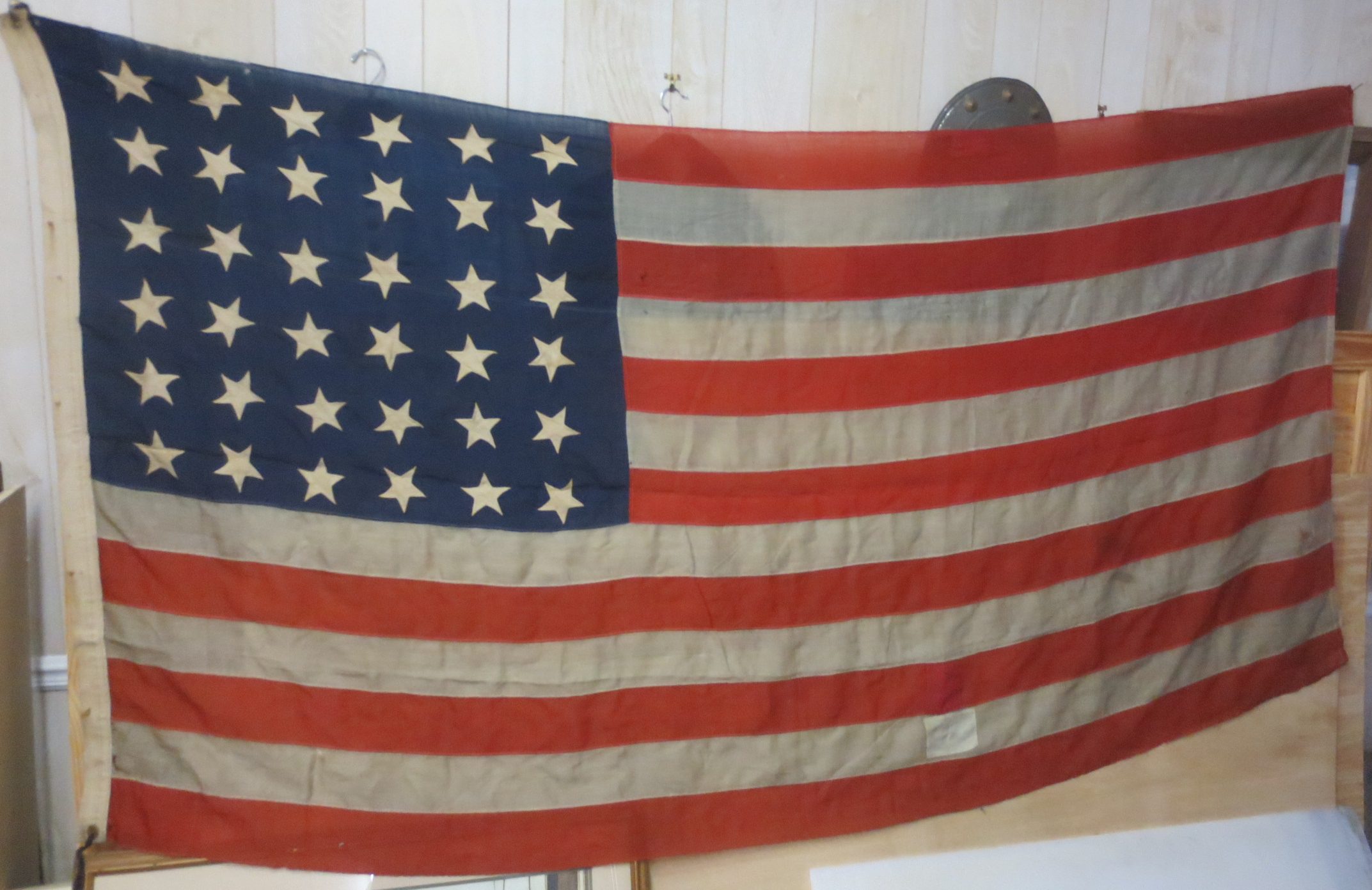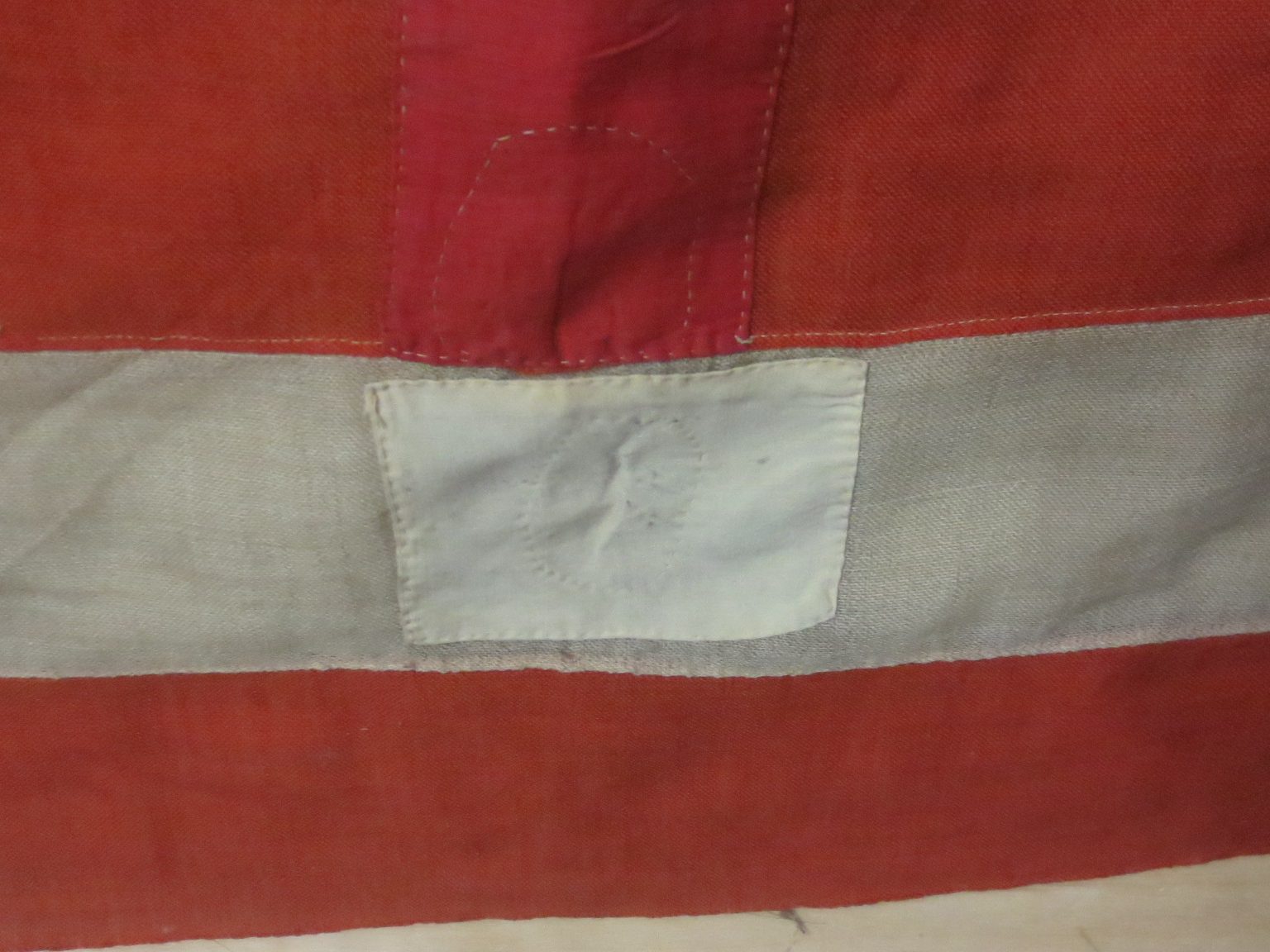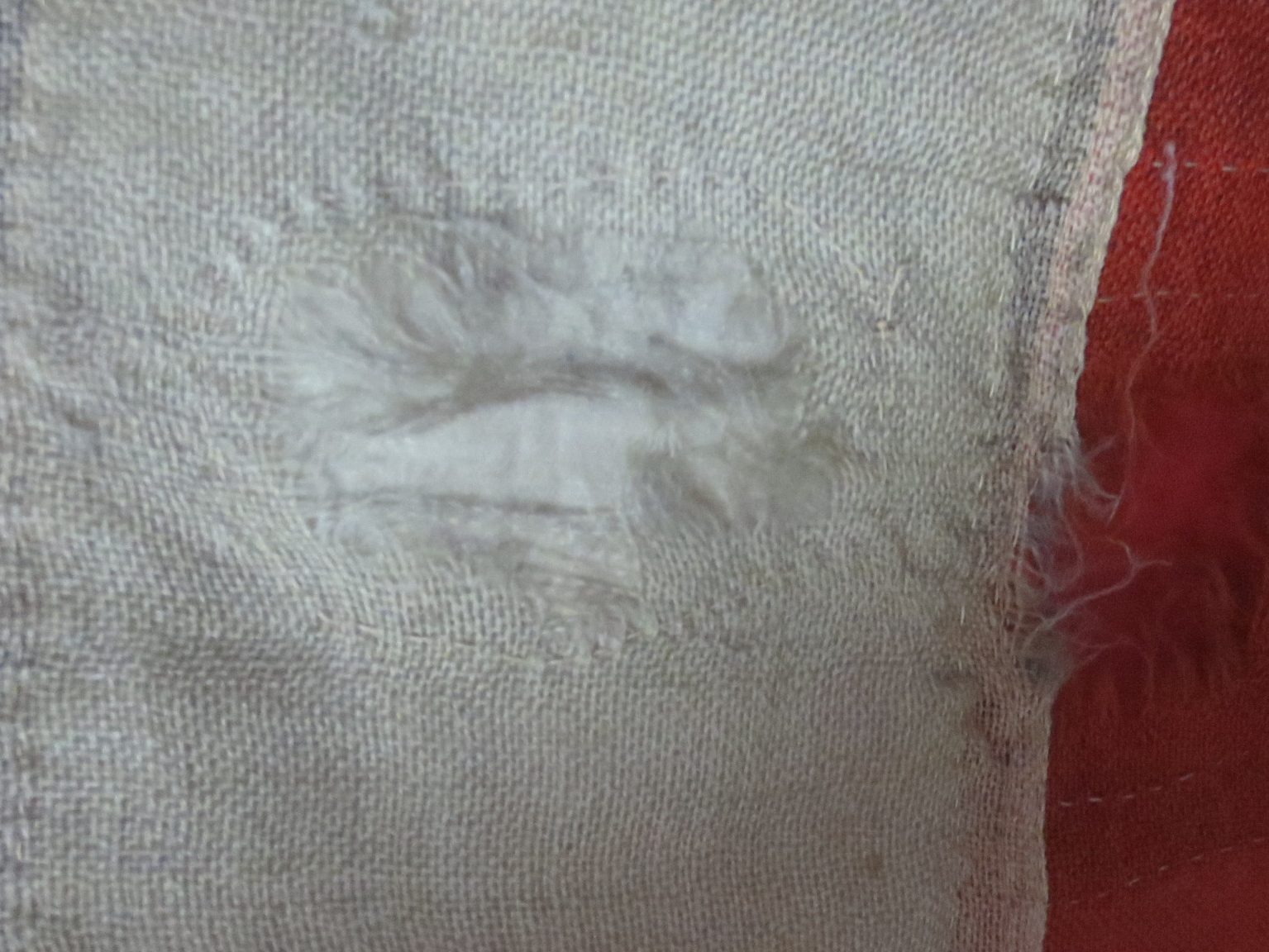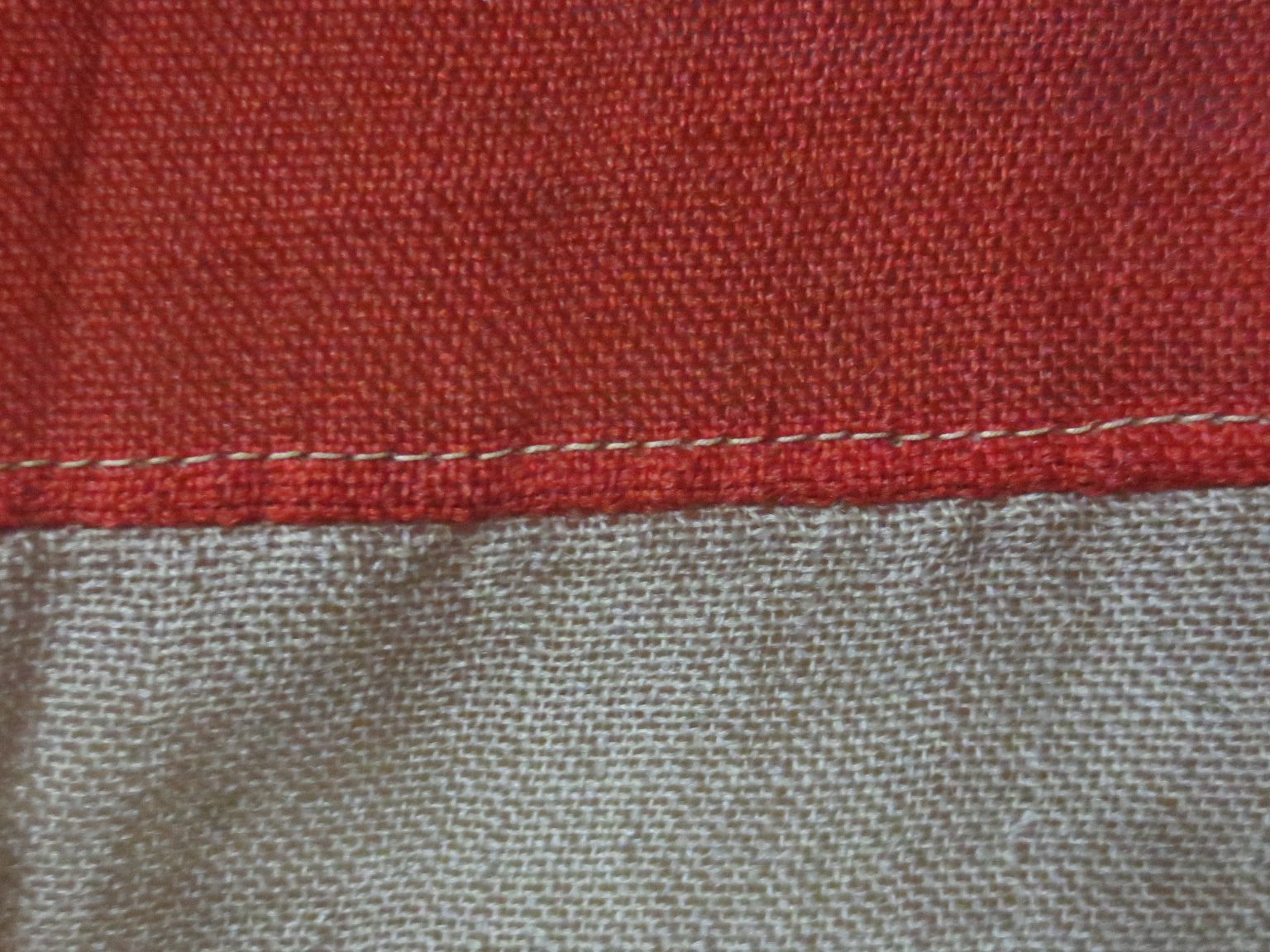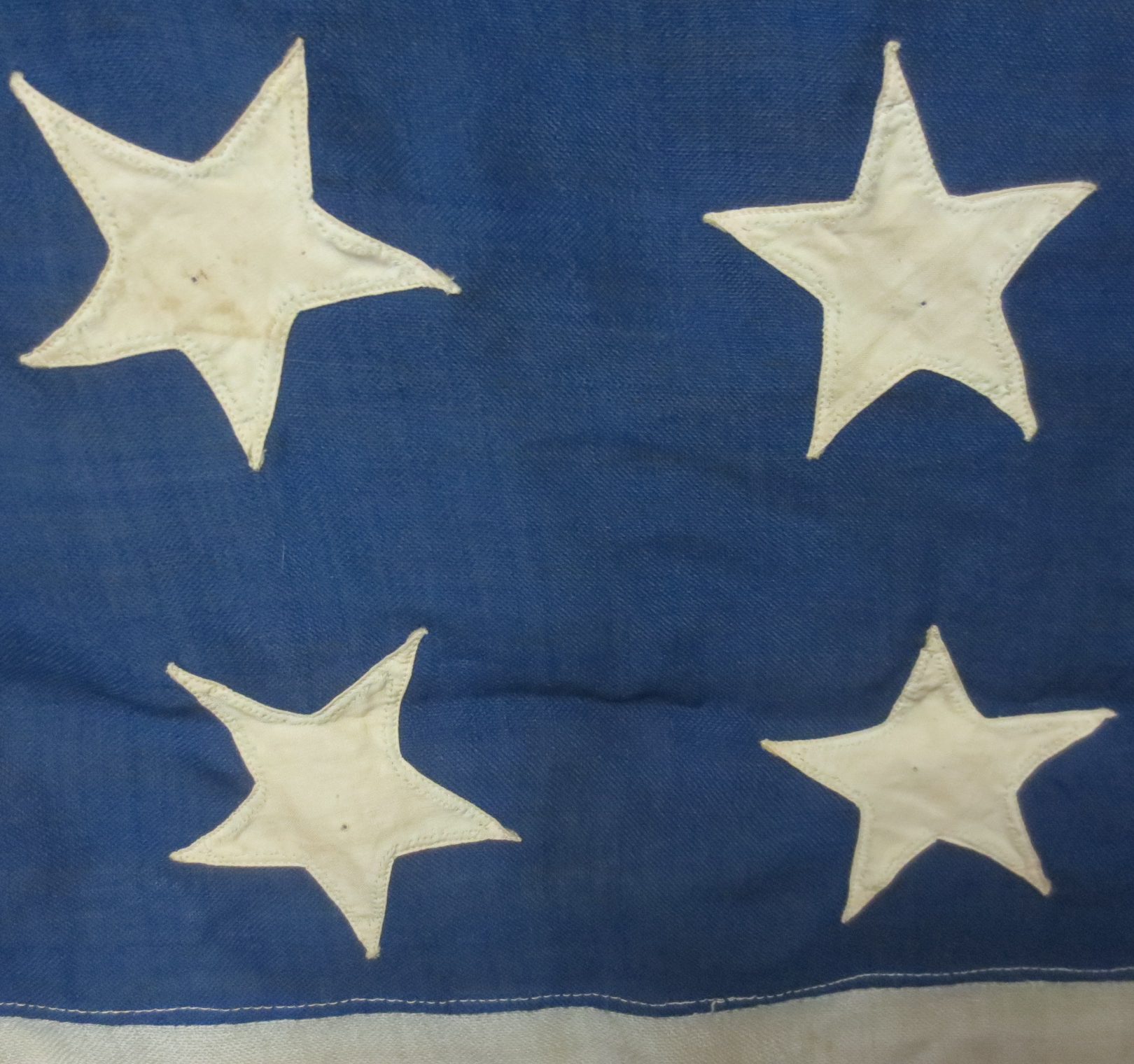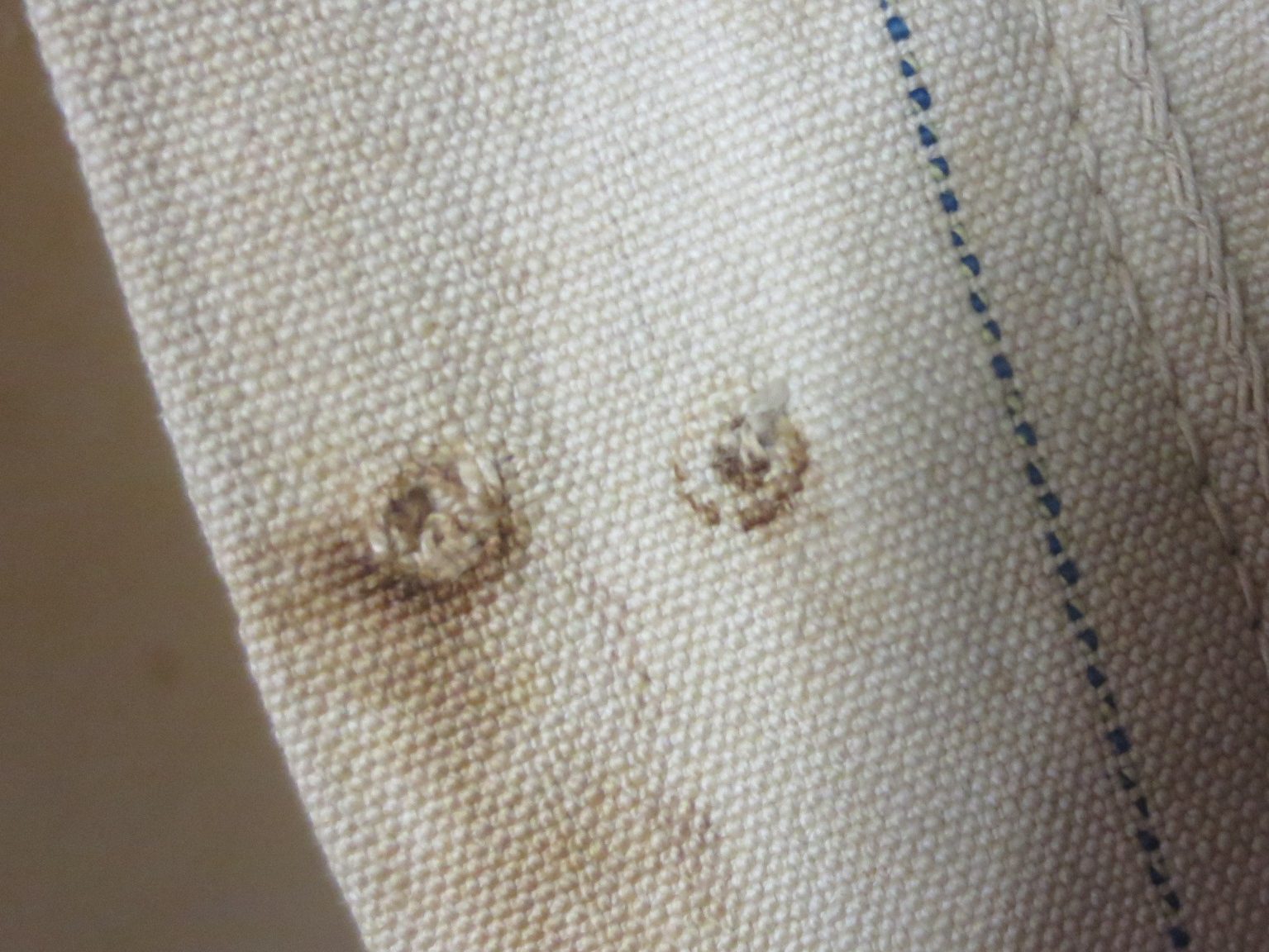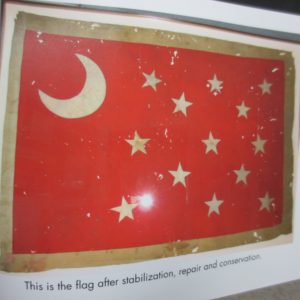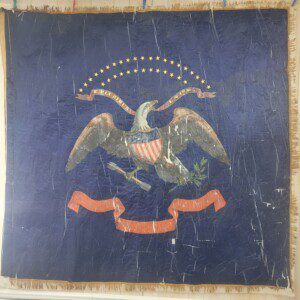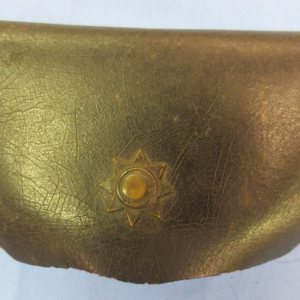Description
This flag is in near fine condition overall with only a few minor areas of damage and one small period repair. It has 36 hand sewn linen stars (cut out on the reverse, typical for the era) and is a combination of machine and hand sewn construction. It measures roughly 57” on the hoist by 106” on the fly and is made primarily of wool bunting, sewn with “z” twist 2-ply non-mercerized cotton thread. The bars are attached via a standard 19th century “top stitched seam” and the hoist is canvas with two brass grommets. The flag shows evidence of being nailed or tacked on the hoist side as well, as there are several small punctures with old iron oxidation present. There is something written in pencil on the hoist but it is illegible, unfortunately.
The star pattern is a bit juxtaposed which indicates the flag is not likely an arsenal produced item and it clearly was primarily assembled by hand. The colors are clear and vibrant overall and it is NOT fragile in any manner. Within the star pattern is a series of leaning “U-patterns” which some experts feel may be a subtle reference to the Union of the United States.
This item was found in a family estate over thirty years ago which was located in Posey County, Indiana. It was found neatly folded inside an old family trunk that belonged to David W. Creek . David Wilbur Creek’s father was Andrew Joseph Creek (1836-1895). We found no enlistment information on Andrew but did find his Civil War draft registration card—more research will have to be done to see if there is a viable connection to a particular soldier, event or state. One solid related potential is that of a relative, William Riley Creek, who enlisted 14 June 1861 in Company E, 15th Indiana Infantry. He was also from Posey County, Indiana, and was wounded 25 November 1863 at Missionary Ridge, Tennessee, and died of wounds.
The thirty-six star flag represents the inclusion of Nevada to the Union. Thirty-six star flags like this one were typically made to celebrate the end of the Civil War as Nevada was admitted on October 31st, 1864, and this flag became official on July 4th, 1865. Nevada was originally part of the Utah Territory beginning in 1850, became its own territory in 1861, and became its own state in 1864.
The timing of Nevada’s inclusion was politically and economically based. For political reasons, Nevada was admitted to the Union just eight days prior to President Lincoln’s re-election bid against General George McClellan. The inclusion was meant to benefit Lincoln and his fellow Republicans. For economic reasons, Nevada was included as part of the Union to help pay off the country’s war debts as Nevada was particularly attractive at the time because of its significant silver mining industry. Nevada expanded its borders in 1866 when the western Utah Territory was added to its eastern side, and further expanded in 1867 when a portion of Pah-Ute County in the Arizona Territory was added to its southern side. Pah-Ute County is a former county in the northwest corner of Arizona Territory that existed from 1865 until 1871, at which point most of the area was transferred to Nevada. The remainder was merged into Mohave County. The majority of the territory is now in Clark County, Nevada, which includes the city of Las Vegas. Due to the transfer of most of the county’s land to Nevada, Pah-Ute is sometimes referred to as Arizona’s “Lost County”. Pah-Ute is an historic spelling of the tribal name Paiute.
In some circles, the thirty-six star flag is generally considered to be the “official” flag for the last six months of the Civil War and was used by several Union military units during that time. It was also the official flag during a portion of the Reconstruction era. The thirty-six star flag was official until July 4th, 1867, the time at which the thirty-seven star flag became official to represent the inclusion of Nebraska in the Union. The pattern lasted only 2 years and the only President to formally serve under this flag was Andrew Johnson (1865-1869).
Nevada’s Civil War past is reflected in the state motto, “All For Our Country, Battle Born.” Although Nevada became a state while the Civil War was in progress, its membership in the Union was not officially recognized by Congress until July 4, 1865, several months after the war was over. 36-star flags were indeed officially issued to Army regiments that required new flags and the flags used officially for Lincoln’s funeral in April 1865 were 36-star flags.
Flags constructed like this one and of this size are typically “building” flags—flown from public offices or businesses—or encampment colors used by a wide variety of groups including military units. It does not have any specific markings to indicate any specific military use or application.
